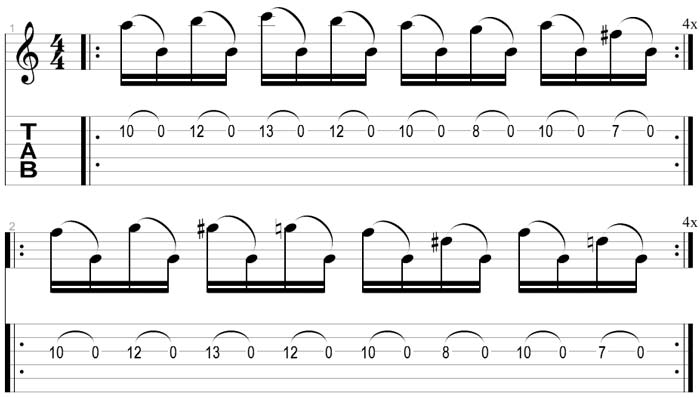What are Double Stops?
The term ‘double stop’ actually means to play two notes at once. It sounds fancy but pretty simple to play. All you need to do to play a double stop is play two notes at once whether those notes are on adjacent strings or skip a string. Quite often guitarists will play double stops on adjacent strings because they are easy to play. It all depends on what type of sound you want to go for.
Hendrix style Double Stops
Jimi Hendrix used double stops quite a lot (as do many other blues/rock guitarists). This lick is inspired by the way Hendrix would repeat a note over and over while adding in vibrato (listen to the ending of All Along the Watchtower). This is straight forward when you’re only playing one note at a time but can be a bit tricky when two notes are played. When you play this lick you will need to make sure that both notes have smooth vibrato and the open second string isn’t played. Hit the strings hard when playing the vibrato to get the feel Hendrix would have given.
Tip: Click on the image above to enlarge it
Think about which fingers you should use to play the two notes. Try different combinations to figure out which one feels easiest for you. Different people will prefer using different fingers. It doesn’t really matter which fingers you use to play the notes as long as all the other strings remain quiet – especially the B string.
Creating Your Own Double Stop Licks
When you can easily play this lick you can start thinking about how to come up with your own licks that use double stops. There are countless ways double stops can be used so just experiment with them until you find something interesting. Start with a basic scale such as the Minor Pentatonic and think about all the different two note positions you can play. Look for positions where you can play two notes using one finger. Those type of double stops are used all the time in blues and rock improvisation.






